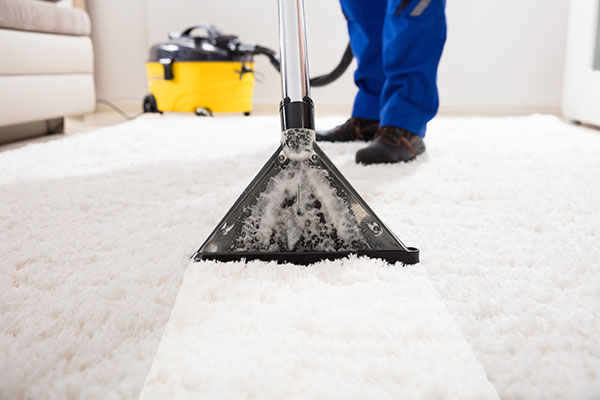- Alana Hermann
- 01 Nov 2025
The Ultimate Guide to Choosing the Best Carpet Cleaning Method for Your Home

The Ultimate Guide to Choosing the Best Carpet Cleaning Method for Your Home
Keeping your carpets clean isn’t just about appearances—it’s also vital for maintaining a healthy and
home. But with so many options on the market, how do you determine the best carpet cleaning method for your specific needs? This guide will walk you through various techniques, compare their benefits, and introduce a standout solution that balances efficiency, sustainability, and health.
Exploring Your Carpet Cleaning Options
Regular
helps preserve the look and longevity of your flooring. Modern carpet cleaning isn’t one-size-fits-all. Here’s a breakdown of popular methods and how they stack up.
Steam Cleaning: Traditional but Time-Consuming
Steam cleaning, also known as hot water extraction, uses high-pressure hot water combined with a cleaning solution to lift dirt from deep within the carpet. It’s effective but has a major drawback: drying time. Wet carpets can take up to 24 hours to dry fully, creating a breeding ground for mold and mildew.
Dry Cleaning: Fast but Superficial
Dry cleaning applies absorbent compounds to the carpet, which are then agitated and vacuumed. It’s faster than steam cleaning and uses minimal moisture, but it might not clean as deeply, especially in high-traffic areas.
Encapsulation: Clean and Green
This method uses a special foam that crystallizes dirt particles, which are then vacuumed away. Encapsulation is considered eco-friendly and quick-drying, making it a popular option in both homes and commercial spaces. However, it may not fully clean carpets with deep stains or heavy soil.
Shampooing: Old-School with Downsides
Shampooing was once the go-to method. A foamy detergent is scrubbed into the carpet and then vacuumed. While it leaves carpets looking clean, it often leaves a sticky residue that attracts more dirt over time, requiring more frequent cleaning.
A Modern Alternative: Hot Carbonating Extraction
If you’re seeking the best carpet cleaning method, hot carbonating extraction (HCE) offers a powerful and eco-conscious solution. This modern technique uses the power of carbonation and a naturally based cleaning solution to lift dirt from carpet fibers—without the need for heavy moisture.
What Makes HCE So Effective?
- Low Water Usage: Uses about 80% less water than steam cleaning.
- Faster Dry Time: Most carpets dry in just 1–2 hours.
- Eco-Conscious Formula: The solution is non-toxic and green-certified.
- Healthier Results: Removes over 98% of common allergens when used with a sanitizer.
Benefits of Choosing the Best Carpet Cleaning Method
When you choose the right approach to cleaning your carpets, you’re doing more than just freshening up a room.
Health Perks
- Reduces allergens like dust mites and pet dander
- Limits mold growth with fast-drying methods
- Supports better indoor air quality
Financial Benefits
- Extends the life of your carpets
- Reduces the need for frequent cleanings
- Enhances property value with well-maintained flooring
Environmental Impact
- Saves water with low-moisture techniques
- Avoids harsh chemicals that can pollute indoor environments
- Green-certified solutions are safer for kids and pets
How to Choose the Best Carpet Cleaning Method for Your Home
There’s no universal best option, but here’s how you can decide what works for you:
- Carpet Type: Plush and thick carpets may benefit from deep-cleaning methods like steam cleaning or HCE.
- Frequency of Use: High-traffic areas may need encapsulation or HCE more regularly.
- Time Constraints: Need it dry fast? Avoid high-moisture methods like steam cleaning.
- Health Concerns: If allergies are an issue, opt for allergen-reducing methods like HCE.
- Eco-Friendly Goals: Choose green-certified, low-moisture solutions.
Carpet Cleaning Methods at a Glance
Here’s a quick reference comparing the most popular techniques:
| Method | Dry Time | Water Usage | Eco-Friendly | Deep Clean Ability |
|---|---|---|---|---|
| Steam Cleaning | 12–24 hours | High | No | Yes |
| Dry Cleaning | 1–2 hours | Low | Moderate | Moderate |
| Encapsulation | 1–2 hours | Low | Yes | Moderate |
| Shampooing | 6–12 hours | Moderate | No | Moderate |
| Hot Carbonating Extraction | 1–2 hours | Very Low | Yes | High |
Frequently Asked Questions (FAQ)
What is the best carpet cleaning method for pet owners?
Hot carbonating extraction is ideal for pet owners because it removes deep-set pet stains and odors without leaving behind harmful residues.
How often should carpets be cleaned?
For optimal hygiene, it’s recommended to clean carpets every 6 to 12 months. High-traffic areas or homes with pets may require more frequent cleaning.
Is it safe for children and pets?
Yes. The cleaning solution used in hot carbonating extraction is non-toxic, making it a safe choice for households with kids and pets.
Can I rent a machine and do it myself?
Yes, but professional services often deliver deeper, longer-lasting results. DIY machines also typically use more water, which extends drying time.
Will frequent cleaning damage my carpet?
No—especially not with low-moisture methods like hot carbonating extraction, which are gentle on carpet fibers and help extend carpet life.
With so many carpet cleaning methods to choose from, it’s easy to feel overwhelmed. But when your goal is a cleaner, healthier home, the best carpet cleaning method will always be one that balances effectiveness, fast drying time, and eco-conscious care. A modern technique like hot carbonating extraction checks all the boxes—making it a smart and sustainable choice for today’s homes. Many cleaning businesses expand their reach by learning how to
their services more effectively online.
About Us

Our mission is to promote health and wellness by providing accessible, high-quality healthcare services..
Categories
- Alternatives
- arts
- business
- business,computer,construction,garden,health,home,information,people,real estate,society
- business,construction,garden,health,home,outdoors,people,real estate,vehicles
- business,construction,health,home,hospitality,people
- business,construction,health,home,outdoors,people
- business,education,entertainment,games,health,home,recreation
- business,health,home,science
- computer
- computer,health,information,reference,science,software
- computer,information,science,software
- construction,hospitality,games,sports
- education
- education,health
- entertainment
- financial
- financial,reference
- food
- gambling
- gambling,food,arts
- games
- garden
- garden,food,home,games,government,reference,gambling,sports,shopping,outdoors,construction,arts
- government
- Health
- health,home,information,people
- health,hospitality,construction,outdoors,government
- health,information,people,reference,science,shopping,society
- health,information,reference,science,software
- health,people
- health,reference
- health,shopping
- home
- home,arts,government,politics,random,games,music,sports,software,vehicles,health
- home,shopping,garden,information
- hospitality
- information
- music
- outdoors
- outdoors,religion
- people,software,society,adult,health,random,music,travel,education,construction,outdoors,computer
- pets
- Pharma
- politics,education,people
- politics,sports
- random
- random,education,financial,games,hospitality,reference,science
- random,education,health,science
- random,shopping,science,home,computer,garden,software,outdoors,world,vehicles,adult,travel
- recreation
- reference
- religion
- science
- science,adult,politics,gambling,health,government
- shopping
- society
- software
- sports
- sports,shopping,vehicles
- travel
- travel,music
- travel,pharma,random
- travel,society,outdoors,people
- Uncategorized
- vehicles
- vehicles,gambling,politics,education,recreation,pets,entertainment,computer,games,food,health,outdoors
- vehicles,outdoors,education,home,financial,music,health,garden,hospitality,random,adult
- vehicles,society
- world
- world,vehicles,financial,politics,government
Must Read
Recent Posts
- Seamless Relocations: Why Nevada Movers and Commercial Movers Are Your Trusted Moving Partners
- New Beginnings in the Sunshine State: Your Complete Ohio to Florida Moving Guide
- Older Adults Experience The Benefits Of A Healthy Way of life
- Med Spa Services: From Skincare to Wellness Treatments
- Why Is a Patient Lift Sling the Best Choice for Mobility and Hygiene Care?
- The Invisible Solution for Gaps, Overbites, and Crowding: When Invisalign is the Best Option | Advanced Orthodontics Bellevue
- California Health Plans and Florida Moving Services Made Simple
- Urgent Care for Kids in Austin: A Parent’s Guide
- 8 Vital Year-End Financial Things to Do
Contact Us

James K. Sutton
2865 Williams Avenue
Newhall, CA 91321
Phone: 661-259-7153
Email: james@info.com
Meta
Follow Us
